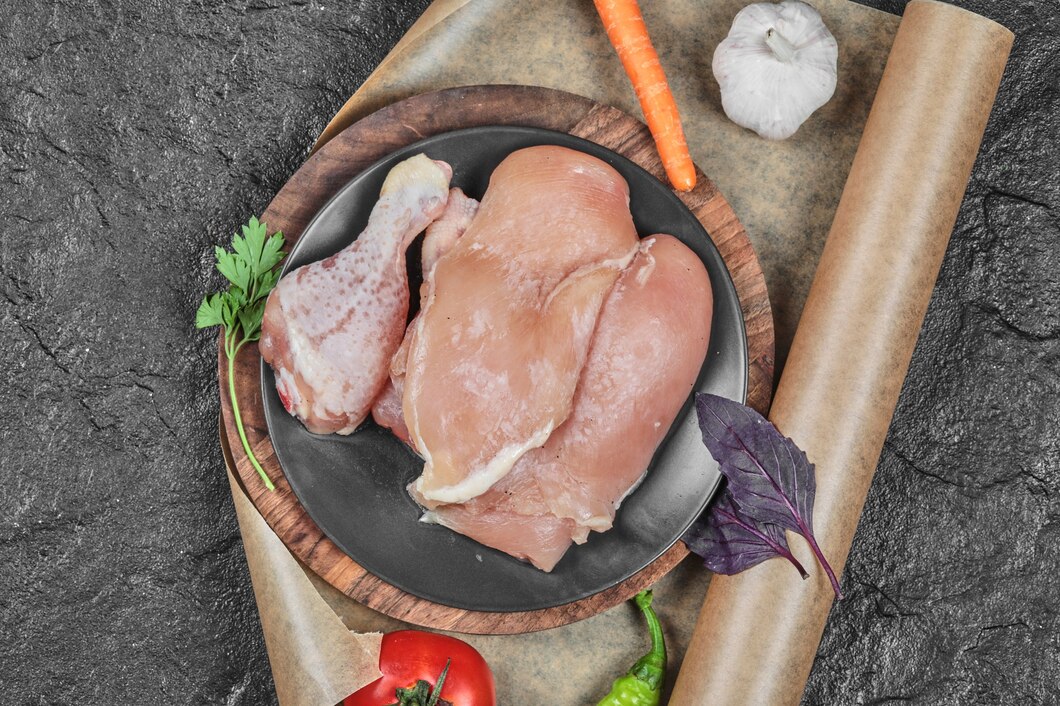Cross-contamination is a major concern in food safety, as it can lead to the spread of harmful bacteria, viruses, and toxins. This can turn otherwise safe foods into potential hazards. Understanding which foods are particularly vulnerable to cross-contamination is essential for preventing foodborne illnesses. Here are 10 foods that can become poisonous when cross-contaminated.
1. Raw Poultry
Raw chicken, turkey, and other poultry are notorious for harboring bacteria such as Salmonella and Campylobacter. If these bacteria spread to ready-to-eat foods like salads or fruits through contaminated cutting boards, knives, or hands, they can cause severe food poisoning.
2. Raw Meat
Beef, pork, and lamb can carry pathogens like E. coli, Listeria, and Salmonella. Cross-contamination can occur when these raw meats come into contact with other foods, especially those that won’t be cooked further, such as vegetables and bread.
3. Raw Seafood
Fish and shellfish can contain harmful bacteria and parasites. Cross-contaminating raw seafood with cooked food or ingredients like sushi rice can result in dangerous foodborne illnesses, including Vibrio infection.
4. Eggs
Raw or undercooked eggs can contain Salmonella. When cross-contaminated with other foods, particularly those that won’t be cooked, like salad dressings or desserts, they can spread the bacteria and cause serious illness.
5. Dairy Products
Unpasteurized milk and soft cheeses can carry Listeria, a bacterium that thrives in cold temperatures. Cross-contamination with other foods, especially those stored in the refrigerator, can lead to Listeria infection, which is particularly dangerous for pregnant women, the elderly, and those with weakened immune systems.
6. Fresh Produce
While fruits and vegetables are healthy, they can become contaminated if they come into contact with raw meat, poultry, or seafood. This is particularly true for leafy greens, berries, and melons, which have been linked to outbreaks of E. coli and Salmonella.
7. Cooked Rice
Cooked rice can harbor Bacillus cereus, a bacterium that thrives in warm temperatures. If rice is left out at room temperature and then cross-contaminated with raw meat or seafood, it can lead to the growth of these bacteria and cause food poisoning.
8. Sprouts
Raw sprouts, such as alfalfa and bean sprouts, are prone to contamination because they grow in warm, moist conditions ideal for bacteria like E. coli and Salmonella. Cross-contamination with other raw or undercooked foods can spread these bacteria.
9. Canned Foods
Improperly stored or damaged canned foods can harbor Clostridium botulinum, which causes botulism, a potentially deadly illness. If these foods come into contact with fresh or ready-to-eat foods through cross-contamination, the toxins can spread.
10. Nuts and Nut Butters
Nuts and nut butters can become contaminated with Salmonella during processing. If they come into contact with other foods, such as fruits or baked goods, through cross-contamination, they can spread the bacteria and lead to foodborne illness.
Tips for Preventing Cross-Contamination
Preventing cross-contamination is key to food safety. Here are some practical tips:
- Separate Raw and Cooked Foods: Always keep raw meats, poultry, seafood, and eggs separate from cooked and ready-to-eat foods. Use different cutting boards, knives, and utensils for each.
- Clean and Disinfect: Wash hands, utensils, and surfaces thoroughly with soap and hot water after handling raw foods. Disinfect cutting boards and countertops regularly.
- Store Properly: Store raw meats, poultry, and seafood on the bottom shelf of the refrigerator to prevent their juices from dripping onto other foods.
- Cook to Safe Temperatures: Ensure that foods are cooked to the appropriate internal temperature to kill harmful bacteria. Use a food thermometer to check.
- Avoid Cross-Contaminated Marinades: Do not reuse marinades used for raw meat or poultry unless they’ve been boiled to kill bacteria.
- Be Mindful of Leftovers: Store leftovers in airtight containers and reheat them thoroughly to prevent the growth of bacteria.
By being aware of the risks and following these safety practices, you can significantly reduce the chances of cross-contamination and keep your meals safe and healthy.








